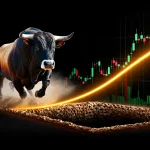What are the leading economic indicators supposed to predict?
Dec 29, 2024
Like physicians analyzing a patient’s vital signs, economists examine critical economic indicators to assess financial health and diagnose areas of concern. Leading indicators, ranging from GDP growth to inflation, unemployment, and mortgage debt, aim to predict future economic performance by identifying emerging trends in current data.
GDP growth encapsulates a nation’s total economic output, making it a pivotal gauge of expansion or contraction. Unemployment rates are a barometer of labour market health, with lower rates signalling greater consumer spending power. Inflation directly impacts consumers and investors, though moderate inflation can indicate economic vigour. Finally, the mortgage-to-GDP ratio assesses housing market stability, where high ratios may foreshadow bubbles.
By tracking these vital signs over time, decision-makers can spot early warning signs of distress and opportunities for growth. Like a patient checkup, examining leading indicators provides critical insights into present health and the prognosis for recovery or decline. Thus equipped, officials and investors can administer preventative care or stimulus where needed, promoting economic well-being.
Decoding Economic Indicators: Unveiling Hidden Rhythms
GDP Growth: The Pulse of the Economy
Gross Domestic Product (GDP) growth is among the indicators investors closely monitor. It encapsulates the total value of all goods and services produced within a country, making it an influential gauge of economic health.
During periods of market uncertainty, a shrinking GDP can be a red flag, indicating economic contraction. On the other hand, robust GDP growth can signify economic expansion, potentially suggesting a favourable environment for investments.
Understanding Unemployment Rates
Unemployment rates serve as a critical barometer of the health of the labour market and, by extension, the economy. When unemployment rates are high, it often signifies a period of economic distress. Job opportunities become scarce, and with fewer people earning wages, consumer spending—a significant driver of economic growth—tends to decrease. This situation can exacerbate economic stagnation and contribute to social upheaval, depriving many people of the opportunity to lead fulfilling lives.
On the other hand, low unemployment rates suggest a healthier job market. More people are earning wages, fueling consumer spending and stimulating economic growth. For instance, in the U.S., unemployment rates have historically hovered around 4% to 5% during periods of financial stability.
However, it’s important to note that the unemployment rate is not static. It fluctuates around a long-term average known as the natural rate of unemployment (NRU). The NRU is determined by labour market characteristics primarily driven by policies. For instance, more vital unions and stricter labour regulations can give workers a better bargaining position. Still, they can also make workers too expensive for employers, leading to higher unemployment rates. Conversely, workers traditionally enjoy higher employment rates in places with lower unionisation, and labour markets are more flexible.
Various economic factors can also influence unemployment rates. For example, during times of financial stress, the demand for labour can lag behind supply, driving unemployment up. Conversely, when the economy is doing well, the demand for labour can outstrip the supply, leading to lower unemployment rates.
Moreover, unemployment rates can significantly impact other aspects of the economy. High unemployment can lead to increased rates of poverty and food insecurity, as people who don’t have a lot of money can’t afford to buy food regularly. It can also contribute to health inequities and increase financial worries, which can have adverse effects on mental health.
As economies recover from periods of distress, such as the recent COVID-19 pandemic, unemployment rates can serve as a critical indicator of recovery. As businesses start to reopen and demand for goods and services increases, the demand for labour also increases, leading to lower unemployment rates. However, the recovery process can be slow and uneven, with some sectors of the economy recovering faster than others.
Inflation: The Cost of Living
Inflation, a term that often stirs up a sense of unease, is the rate at which the general level of prices for goods and services is rising. It’s a phenomenon that directly impacts consumers and investors alike, influencing the purchasing power of money and the returns on investments.
Inflation is fluid and constantly changing, and its effects can be felt differently from one month to the next, depending on various factors such as government policies and market conditions. Moderate inflation is generally considered a sign of a healthy economy, indicating that demand for goods and services is growing. However, when inflation runs too high, it can erode the value of money, disrupt financial stability, and create a ripple effect of economic challenges.
For consumers, high inflation can mean escalating prices, increasing the risk of layoffs, and decreasing purchasing power. This is especially true for those who do not receive salary or wage increases that keep up with the cost of living. Large purchases may become unaffordable, and the cost of debt can increase as central banks raise interest rates to control inflation. This can lead to individuals being priced out of the market, making it harder to save money and driving them to engage in riskier investment strategies to maintain or even increase their wealth.
Inflation is measured by statistical agencies using a price index, which is the average price of a basket of goods and services that households typically purchase. The year-over-year change in this index is what we call the inflation rate. However, this is an average across a range of categories, and the actual change in the cost of living can vary from person to person depending on how they spend their money.
For investors, inflation trends are a crucial element to consider when assessing the overall economic climate. Inflation can influence the purchasing power of consumers and, thus, the returns on investments. For example, if wage growth is faster than expected, businesses could pass along the cost of those higher wages by raising consumer prices, which might result in higher inflation. Conversely, slower-than-expected wage growth might result in lower inflation.
Inflation also significantly impacts the poor, who spend a large proportion of their weekly or monthly household budgets on food and energy—commodities that are hard to substitute or go without when prices spike. These individuals are also less likely to own assets like real estate, which has traditionally served as an inflation hedge.
The Mortgage-to-GDP Ratio: A Barometer for Housing Market Stability
The mortgage-to-GDP ratio is a critical metric that measures the total value of outstanding mortgage loans compared to a country’s Gross Domestic Product (GDP). This ratio is a thermometer for the housing market’s temperature, providing valuable insights into its stability and sustainability. A balanced mortgage-to-GDP ratio suggests a healthy alignment between the housing market and the broader economy, indicating that economic fundamentals support the real estate sector’s growth.
However, alarm bells ring when this ratio escalates rapidly and exceeds historical averages, signalling potential overheating in the housing market. High mortgage-to-GDP ratios may foreshadow the formation of housing bubbles, characterized by inflated property prices detached from underlying economic realities. Such bubbles are precarious; they can lead to a sudden market correction, causing property values to plummet and leaving homeowners with mortgages that exceed the worth of their properties—a phenomenon that can have devastating effects on the economy, reminiscent of the 2007-2008 financial crisis. Consequently, keeping a close eye on the mortgage-to-GDP ratio is paramount for economists and policymakers aiming to prevent such turbulent market dynamics.
Conclusion: The Deceptive Dance of Leading Economic Indicators
In economics, leading indicators are often cast as the oracles, whispering predictions of prosperity or peril. Yet, as Machiavelli might caution, these indicators are double-edged, capable of guiding and misleading those who rely too heavily on them. They are not merely numbers but reflections of collective human behaviour, subject to the whims and follies of mass psychology.
Leading economic indicators like GDP growth, unemployment rates, and inflation are intended to forecast financial trends, signalling potential growth or downturns. However, they are also susceptible to the lemming-like tendencies of investors and policymakers who may follow these signals blindly, rushing headlong into decisions without considering the broader context. This herd mentality can lead to economic bubbles or crashes, as seen in the housing market collapse 2008, where the mortgage-to-GDP ratio served as a harbinger of impending disaster.
H.L. Mencken, with his characteristic cynicism, might argue that these indicators often serve as tools for the “booboisie”—the uninformed masses—who are easily swayed by the illusion of certainty they provide. These metrics are but shadows on the wall, offering a limited view of the complex and dynamic economic landscape.
Machiavelli would likely advise a ruler—or, in this case, an investor—to adapt to the temper of the times, using these indicators as one of many tools in their arsenal. He would warn against the folly of relying solely on these metrics, advocating instead for a more nuanced approach that considers the unpredictable nature of human behaviour and the potential for manipulation inherent in any system.
In conclusion, while leading economic indicators offer valuable insights, they must be interpreted cautiously and sceptically. By understanding their limitations and the psychological forces at play, investors and policymakers can better navigate the economic landscape, avoiding the pitfalls of herd behaviour and embracing opportunities with strategic foresight. This balanced approach, informed by the harsh realities of human nature, allows for more resilient and informed decision-making in the face of economic uncertainty.
Bridging Divides: Compelling Cross-Discipline Read











